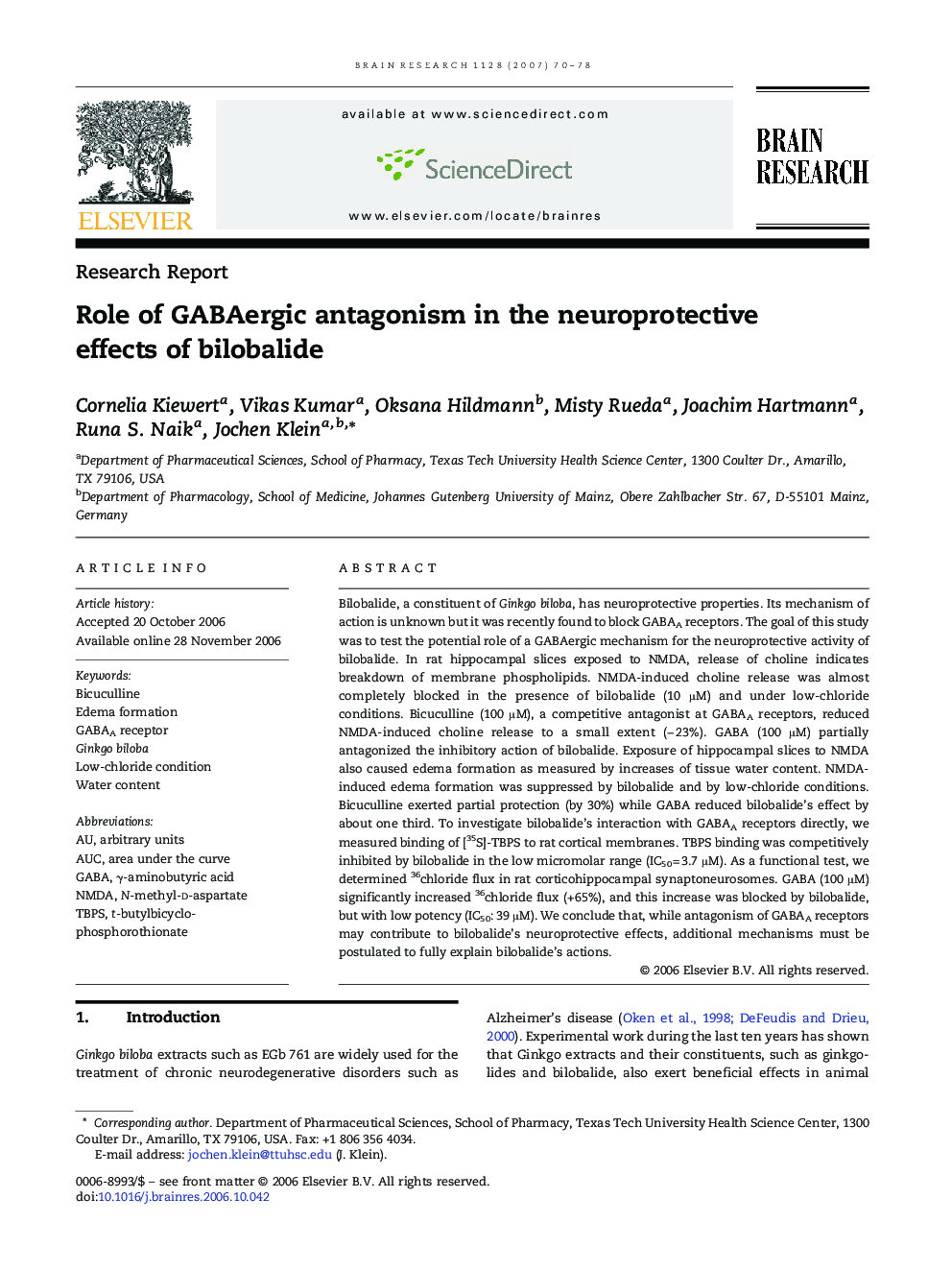| Article ID | Journal | Published Year | Pages | File Type |
|---|---|---|---|---|
| 4331705 | Brain Research | 2007 | 9 Pages |
Bilobalide, a constituent of Ginkgo biloba, has neuroprotective properties. Its mechanism of action is unknown but it was recently found to block GABAA receptors. The goal of this study was to test the potential role of a GABAergic mechanism for the neuroprotective activity of bilobalide. In rat hippocampal slices exposed to NMDA, release of choline indicates breakdown of membrane phospholipids. NMDA-induced choline release was almost completely blocked in the presence of bilobalide (10 μM) and under low-chloride conditions. Bicuculline (100 μM), a competitive antagonist at GABAA receptors, reduced NMDA-induced choline release to a small extent (− 23%). GABA (100 μM) partially antagonized the inhibitory action of bilobalide. Exposure of hippocampal slices to NMDA also caused edema formation as measured by increases of tissue water content. NMDA-induced edema formation was suppressed by bilobalide and by low-chloride conditions. Bicuculline exerted partial protection (by 30%) while GABA reduced bilobalide's effect by about one third. To investigate bilobalide's interaction with GABAA receptors directly, we measured binding of [35S]-TBPS to rat cortical membranes. TBPS binding was competitively inhibited by bilobalide in the low micromolar range (IC50 = 3.7 μM). As a functional test, we determined 36chloride flux in rat corticohippocampal synaptoneurosomes. GABA (100 μM) significantly increased 36chloride flux (+ 65%), and this increase was blocked by bilobalide, but with low potency (IC50: 39 μM). We conclude that, while antagonism of GABAA receptors may contribute to bilobalide's neuroprotective effects, additional mechanisms must be postulated to fully explain bilobalide's actions.
